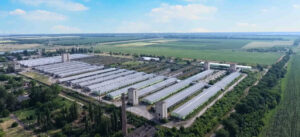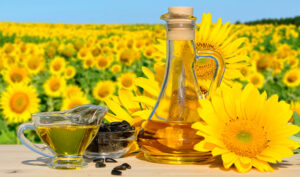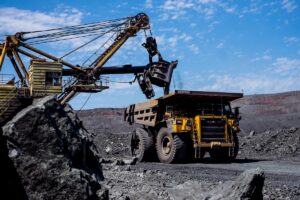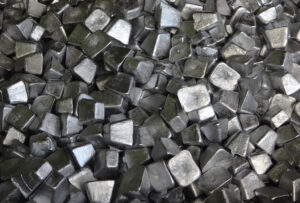
Agroholding KSG Agro has bought back 10% of its shares from its major shareholder Olbis Investments Ltd, the company’s press service reports.
“The purpose of this step is to increase the holding’s liquidity, which will allow KSG Agro to diversify and expand its investment activities in the EU markets,” the agricultural holding explained.
KSG Agro noted that they want to place special emphasis on investments in biofertilizers. As part of the company’s long-term strategy to strengthen its financial stability, it is also considering real estate investments.
The first step in implementing this strategy is to strengthen the company’s financial position and liquidity by acquiring 1.5 million shares from its major shareholder, Olbis Investments Ltd. Previously, Olbis Investments Ltd S.A. owned 64.62% of the holding’s share capital, and 35.17% were in free float.
KSG Agro, a vertically integrated holding company, is engaged in pig breeding, as well as production, storage, processing and sale of grains and oilseeds. Its land bank in Dnipropetrovska and Khersonska oblasts is about 21 thousand hectares.
According to the agricultural holding, it is one of the top 5 pork producers in Ukraine. In 2023, it launched a “network-centric” strategy, which will move from developing a large location to a number of smaller pig farms located in different regions of Ukraine.
In January-September 2023, KSG Agro received $1,336 million in net profit, which is almost 14 times more than in the same period in 2022. Its EBITDA for the three quarters of this year increased by 67% to $4.5 million, and its profit from sales increased by 16% to $11.9 million.
In January-March 2024, KSG Agro agricultural holding reduced its net profit by 37% to $0.96 million, while revenue decreased by 2% to $5.02 million. Its EBITDA decreased by 2% to $1.83 million.

The exports of high-oleic sunflower oil from Ukraine in 2024-2025 marketing year continue to decline, which is typical for the sector for the fifth consecutive season, APK-Inform news agency reported.
“In September-December of the current season, the country shipped only 57 thsd tonnes of the oil to the foreign markets, which is 52% down from the same period last season and the lowest in the last seven seasons,” the analysts said.
Moreover, the share of high oleic oil in the total exports of sunflower oil in 2024/25 MY decreased to 3%, compared to 5-8% in the previous several seasons.
“The main reasons for the decline in the supply of high oleic sunflower oil are the decrease in the production of high oleic sunflower last year and the restraint of the oilseed sales by the farmers due to the significant increase in the price of the classic hybrids of the crop and the record premiums for high oleic sunflower from the Ukrainian processors,” the experts explained.
Thus, given the available stocks of HO sunflower oil among farmers and the likely more active sales of this crop in the spring in the second half of the current season, the volumes of processing and, accordingly, exports of HO oil may increase.
According to the analysts, the potential of exports of HO sunflower oil in the season-2024/25 is about 220-240 thsd tonnes against 289 thsd tonnes in the previous season and may be the lowest in many years.
At the same time, the increase in the price of sunflower oil in the current season and high-oleic oil in particular, as well as the growth of the premium for rapeseed oil on the world market may be the additional factors of the slowdown, APK-Inform forecasts.

Every fifth child in Ukraine has reported losing a close relative or friend since the start of Russia’s full-scale aggression three years ago, according to a survey published by UNICEF on Friday.
“For all these years, death and destruction have been a daily routine for every child in Ukraine. This level of violence causes enormous suffering for children and deprives them of a true childhood,” said UNICEF Executive Director Katharine Russell.
It is noted that the third year of the full-scale war in Ukraine has become even more deadly for children compared to 2023: the number of child casualties has increased by 50%. In total, more than 2,520 children have been killed or injured since February 2022. It is noted that the true number of victims is likely to be much higher, as these are only figures confirmed by the UN.
It is officially recorded that more than 1,600 educational institutions and almost 790 healthcare facilities have been damaged or destroyed over the past three years, UNICEF added.
“The war has caused irreparable losses to children and adolescents, affecting their development and well-being at key stages of their lives,” the Fund states.
He reminds that the experience of the first three years determines the health and learning of children throughout their lives, and in Ukraine, children born three years ago do not even know what peaceful life is. Parents report feeling physically and emotionally exhausted, which affects the lives of the entire family. The war has also made it harder for young children and their parents to access critical services.
“Adolescence is a particularly difficult period for children in Ukraine. Almost a third of adolescents reported feeling sad and hopeless, which prevent them from doing their usual activities. These feelings are much more prevalent among girls,” the publication says.
UNICEF points out that children’s mental health problems are exacerbated by forced seclusion. Many children spend hours in shelters, losing opportunities for socializing and learning. Almost 40% of children study only online or combine face-to-face and remote classes. The impact of the war on learning is very serious: the average level of educational loss is two years in reading and one year in math, according to the Foundation.
UNICEF reminds that it is working with partners across Ukraine to provide children in frontline areas with vital support, including access to health services, safe water, cash assistance, education and protection. In addition, the Foundation works with the government and partners to lay the foundation for Ukraine’s recovery and long-term development, and to promote social cohesion by strengthening systems that support children and their families. This includes strengthening child social protection, health and education systems so that they can provide children with timely and quality support, care and opportunity services.
It is also noted that there are currently 6.86 million Ukrainian refugees registered in the world, almost 1 million of whom live in Poland. For refugee children, access to schooling remains a challenge, as half of school-age children in refugee-hosting countries are not enrolled in local educational institutions, which affects their ability to learn and communicate with their peers, as well as develop basic skills critical to Ukraine’s recovery.
“All children without exception must be protected from the effects of war in accordance with international humanitarian and human rights law. What children in Ukraine need most of all is sustainable peace and the chance to realize their full potential,” Russell emphasized.

In 2025, Northern Mining and Processing Plant (Northern GOK, Kryvyi Rih, Dnipro Oblast), a part of Metinvest Group, will allocate over UAH 62.5 million to upgrade and maintain equipment at Mining Transportation Shop No. 1.
According to the plant, it is implementing new approaches to ensure efficient operation. Thus, the year started with the efficient use of resources, plans to create a new fuel station and overhaul mining machines.
These measures will ensure the stability of the ore removal and overburden stripping process. Today, GTC-1 is operating at its maximum capacity of 37-38 dump trucks per shift, just like before the war. The main production task of the shop is to transport rock mass from the open pit to the receiving wells of the crushing plant. Every month, the unit transports 1.5 million cubic meters of rock mass.
Experts emphasize that one of the areas of work is to study the wear resistance of large tires and their runnability. Currently, GTZ-1 dump trucks run on Michelin tires (84,000 km) and Maxam tires (80,000 km). There is a prospect of a gradual transition to Bridgestone tires with better performance.
In addition, tire pressure monitoring further contributes to the increase in mileage. These and other steps will extend the service life of large tires to 95 thousand kilometers, which is at least a year of use under optimal conditions. Other measures include the resumption of in-house tire repairs.
One of the planned projects is the construction of an additional filling station at the minus 193 m horizon, where the intake well DF-3 is located. It is planned to arrange a refueling point for technological vehicles there, reducing the distance of the previous route by 3.3 km.
Last year, GTZ-1 specialists overhauled the running gear of three Cat D9 and Cat D10 bulldozers and a Liebherr bulldozer. Two dump trucks had their KTA-50 engines rebuilt. Another machine had its old engine replaced with a new one. In addition, six dump trucks’ loading platforms were repaired in-house.
“Implementation of the overhaul program is a key condition for reliable operation of machines in quarries, ensuring their maximum efficiency and extending the service life of the mechanisms. In total, in 2025, we plan to allocate over UAH 62.5 million to restore and maintain equipment. As a result, these measures will ensure the stability of the ore removal and overburden stripping process,” emphasized Sergey Tyrlych, head of the GTC-1 at YuGOK.
Yenakiieve GOK is part of Metinvest Group, whose main shareholders are System Capital Management (SCM, Donetsk) (71.24%) and Smart Holding Group (23.76%). Metinvest Group’s management company is Metinvest Holding LLC.

In January 2025, Ukraine increased imports of lead and lead products by 4.3 times compared to the same period in 2024, to $580 thousand (in December – $1.193 million). At the same time, lead exports decreased by 26.3% to $643 thousand (December: $583 thousand).
Lead is currently mainly used in the production of lead-acid batteries for the automotive industry. In addition, lead is used to make bullets and some alloys.

Insurance company Euroins Ukraine (Kyiv) will increase its authorized capital to UAH 168.190 million by conducting an additional issue of shares in the amount of UAH 90.250 million.
According to the insurer’s information posted in the NSSMC system, this decision was made by the shareholders at a meeting on February 19.
According to the report, it is planned to place 9.025 billion shares with a nominal value of UAH 0.01, at a placement price of UAH 0.02.
It is also specified that the placement of shares may lead to a change in the owners of a significant stake, an increase in the shareholding of shareholders who already own 5% or more of the shares, namely: JSC Euroins Insurance Group (Bulgaria) – 92.728%, PrJSC European Travel Insurance – 5.745%.
The raised financial resources from the share placement are planned to be used in full to bring the company’s activities in line with the requirements of the Law of Ukraine “On Insurance” regarding solvency and investment activities. Namely, it is planned to place 70% of the funds received in the course of the issue in bank deposits, 20% in government bonds of Ukraine and other securities, and 10% in the centralized insurance reserve funds of the Motor (Transport) Insurance Bureau of Ukraine.
Euroins Ukraine is a universal insurance company that has been operating in the Ukrainian market since 1992. It is a part of the Bulgarian insurance group Euroins, which is one of the largest independent insurance groups operating in Central, Eastern and South-Eastern Europe.